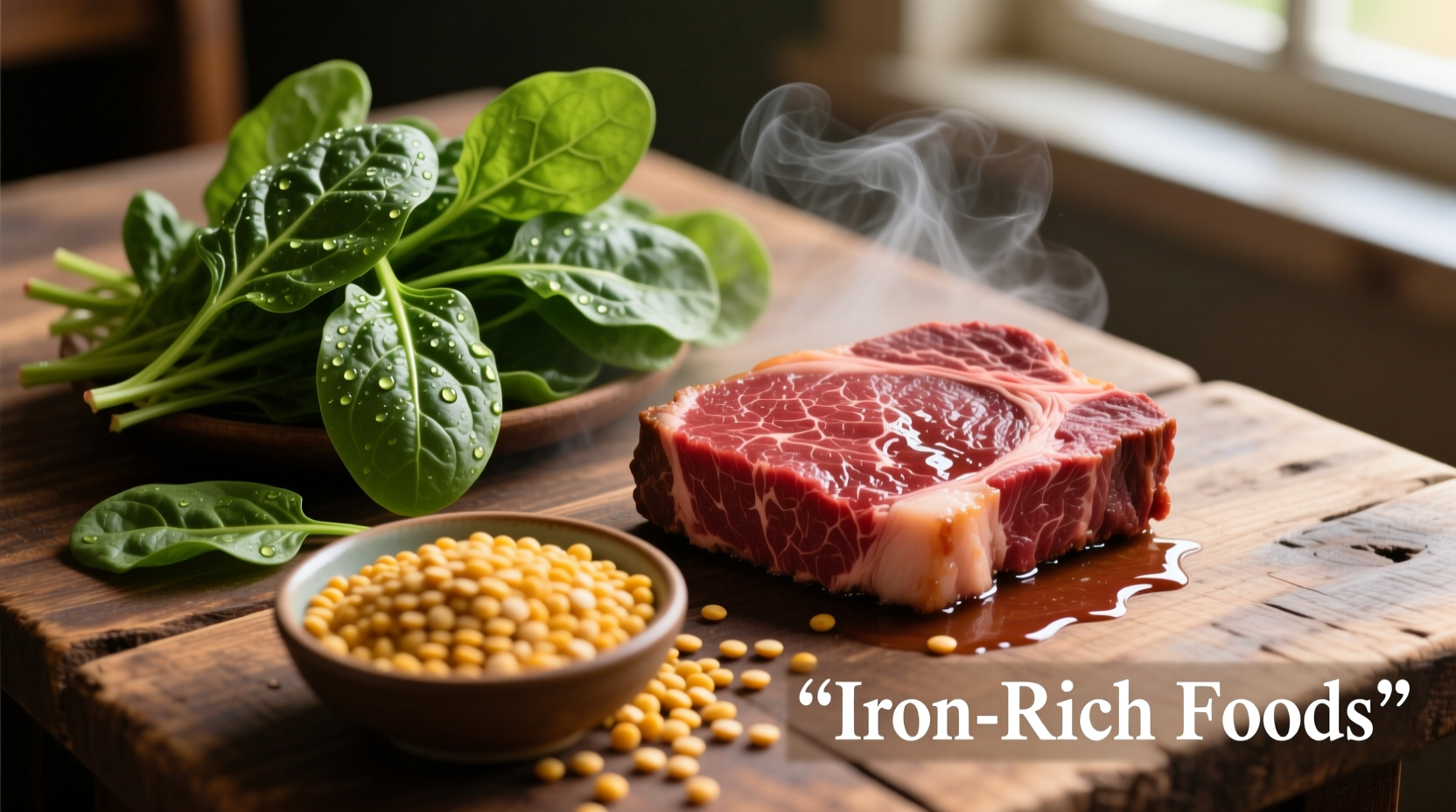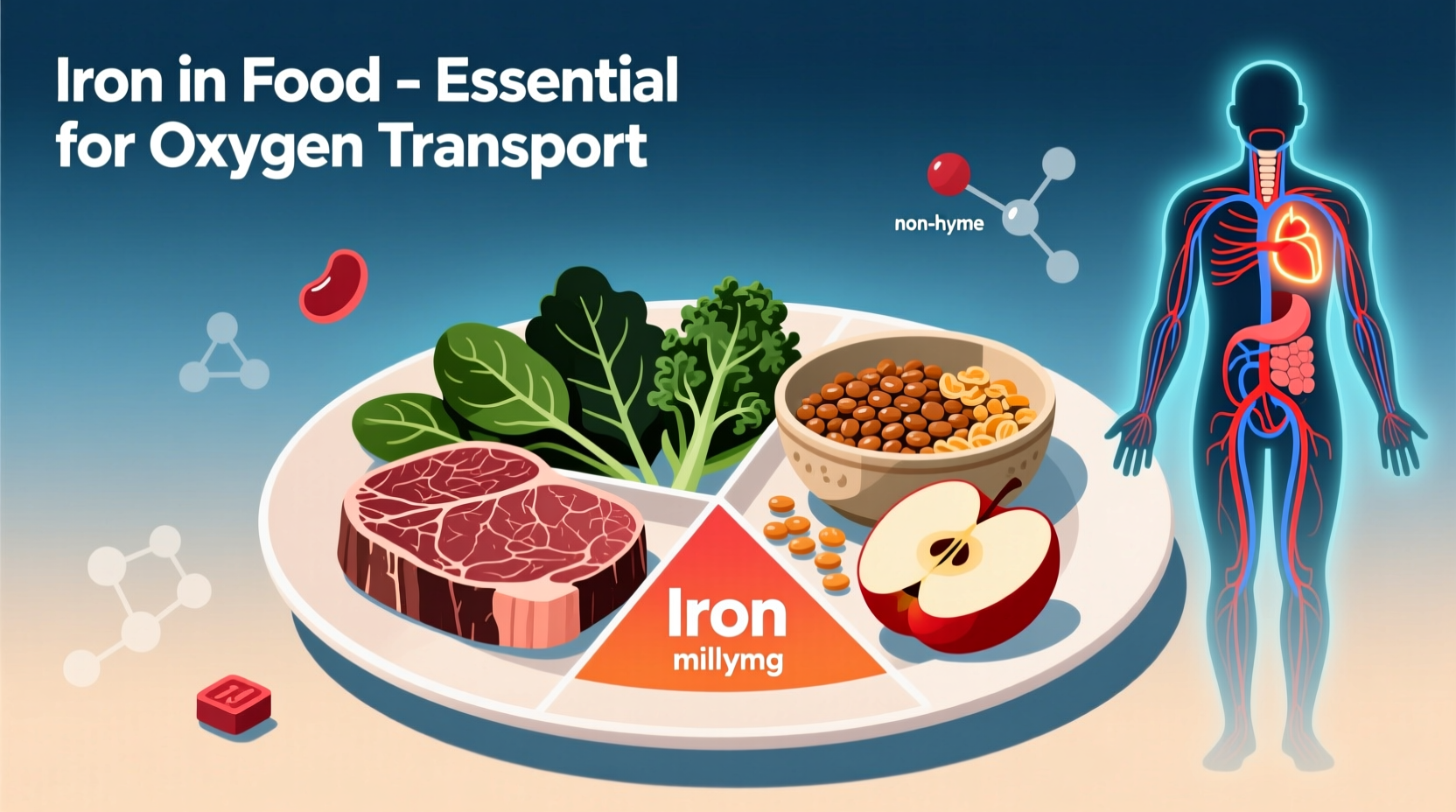When you search what is iron in food, you're likely looking for more than just a basic definition. You want to know which foods actually deliver this critical nutrient, how your body uses it, and practical ways to ensure you're getting enough. This guide cuts through the confusion with science-backed information you can actually use.
Understanding Iron: Your Body's Oxygen Transport System
Iron serves as the cornerstone of hemoglobin, the protein in red blood cells that carries oxygen from your lungs to every cell in your body. Without sufficient iron, your cells become oxygen-deprived, leading to fatigue, weakened immunity, and impaired cognitive function. The National Institutes of Health (NIH) identifies iron as one of the most critical minerals for human health, with approximately 2 billion people worldwide affected by iron deficiency.
Heme vs. Non-Heme Iron: The Absorption Difference That Matters
The type of iron in your food dramatically impacts how much your body can actually use. This distinction explains why some iron-rich foods deliver more nutritional benefit than others:
| Iron Type | Food Sources | Absorption Rate | Key Characteristics |
|---|---|---|---|
| Heme Iron | Red meat, poultry, fish | 15-35% | Better absorbed, unaffected by other dietary factors |
| Non-Heme Iron | Beans, lentils, spinach, fortified cereals | 2-20% | Absorption influenced by enhancers and inhibitors |
This fundamental difference explains why vegetarians and vegans typically require nearly twice the daily iron intake compared to meat-eaters, according to the World Health Organization's nutritional guidelines.
Iron-Rich Foods That Actually Deliver
Not all "iron-rich" foods are created equal. These options provide substantial, bioavailable iron:
- Clams (3 ounces): 23.8 mg iron (132% of daily value)
- Fortified breakfast cereals (1 serving): 18 mg iron (100% DV)
- White beans (1 cup): 8 mg iron (45% DV)
- Beef liver (3 ounces): 5.2 mg iron (29% DV)
- Spinach (cooked, 1 cup): 6.4 mg iron (36% DV)
According to USDA FoodData Central, combining plant-based iron sources with vitamin C-rich foods can boost absorption by up to 300%. Try pairing lentils with tomatoes or spinach salad with lemon dressing for maximum benefit.
Absorption Boosters vs. Blockers: The Practical Guide
Your meal composition significantly impacts iron uptake. Understanding these factors transforms how you combine foods:
- Vitamin C (citrus fruits, bell peppers, broccoli)
- Meat, fish, and poultry (the "meat factor")
- Fermented foods (sauerkraut, kimchi)
- Calcium (dairy products, fortified plant milks)
- Phytates (whole grains, legumes)
- Polyphenols (tea, coffee, red wine)
- High-fiber supplements
Research published in the American Journal of Clinical Nutrition shows that drinking tea with a meal can reduce iron absorption by 50-70%. Space your tea consumption at least one hour before or after iron-rich meals for optimal uptake.

Diet-Specific Iron Strategies
Different dietary patterns require tailored approaches to meet iron needs:
For Plant-Based Eaters
Vegetarians and vegans should aim for 1.8 times the standard iron recommendation. Soak and sprout legumes to reduce phytate content, and consistently pair iron sources with vitamin C. The Academy of Nutrition and Dietetics confirms that well-planned vegetarian diets can meet iron requirements through strategic food combinations.
For Pregnant Women
Iron needs double during pregnancy (27 mg daily versus 18 mg for non-pregnant women). Incorporate lean red meat 2-3 times weekly and consider cooking in cast-iron cookware, which can increase iron content in food by up to 16 times according to a study in the Journal of Food Science.
For Athletes
Endurance athletes lose iron through sweat, foot strike hemolysis, and gastrointestinal bleeding. Female athletes particularly need to monitor iron status, as deficiency can significantly impact performance. Regular blood tests and strategic meal timing help maintain optimal levels.
Daily Iron Requirements: What You Really Need
Your iron needs vary significantly based on age, gender, and life stage. The NIH Office of Dietary Supplements provides these evidence-based recommendations:
- Men (19+ years): 8 mg daily
- Women (19-50 years): 18 mg daily
- Pregnant women: 27 mg daily
- Vegetarians/vegans: 1.8 times the standard recommendation
- Infants (7-12 months): 11 mg daily
Exceeding 45 mg daily from supplements can cause toxicity, but food sources rarely provide excessive amounts. Your body naturally regulates iron absorption based on current stores, making dietary iron overdose virtually impossible through food alone.
Recognizing Iron Deficiency: Early Warning Signs
Iron deficiency develops in stages, with early symptoms often overlooked. The Centers for Disease Control and Prevention identifies these progression markers:
- Stage 1: Depleted iron stores (low ferritin) with no anemia
- Stage 2: Reduced red blood cell production (elevated transferrin)
- Stage 3: Actual iron deficiency anemia (low hemoglobin)
Early signs include fatigue, brittle nails, restless legs syndrome, and pica (craving non-food items like ice or dirt). If you experience these symptoms consistently, consult a healthcare provider for proper testing rather than self-supplementing.
When Supplements Become Necessary
While food-first approaches are ideal, certain conditions warrant supplementation under medical supervision:
- Diagnosed iron deficiency anemia
- Heavy menstrual bleeding
- Gastrointestinal disorders affecting absorption (celiac, IBD)
- Post-bariatric surgery
- Regular blood donors
Ferrous sulfate remains the most common and cost-effective supplement, but newer formulations like ferrous bisglycinate offer better absorption with fewer gastrointestinal side effects. Always take iron supplements on an empty stomach with vitamin C for maximum absorption, unless directed otherwise by your healthcare provider.











 浙公网安备
33010002000092号
浙公网安备
33010002000092号 浙B2-20120091-4
浙B2-20120091-4